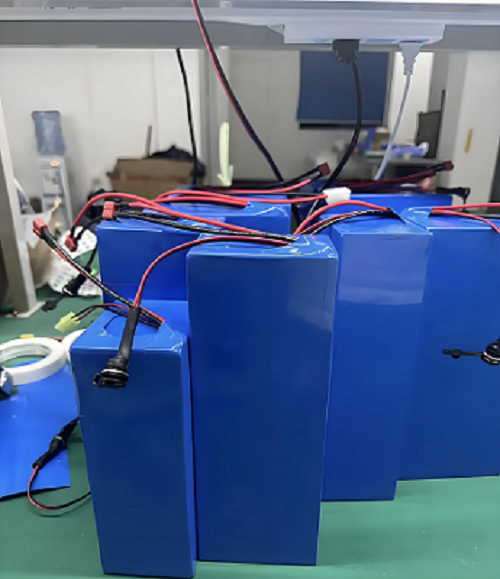At the moment when new energy vehicles are popular, the accuracy of battery life directly affects the user's travel experience. As the use time increases, the battery management system (BMS) may deviate from the calculation of power, resulting in the display of battery life and actual battery life not matching. At this time, it is particularly important to calibrate the battery charge. Below, we will introduce the fast charging calibration steps and precautions for lithium iron phosphate batteries and ternary lithium batteries in detail to help you regain accurate battery life.

1. Fast charging calibration steps and precautions for lithium iron phosphate batteries
(I) Calibration steps
Discharge to about 20%: In daily car use, use the vehicle normally and consume the remaining power to about 20%. It should be noted that when the power is less than 20%, try to avoid continuing to drive to avoid irreversible damage to the battery due to excessive discharge. After the discharge is completed, let the vehicle stand for more than 4 hours. During this period, turn off all electrical devices, including lights, radio, air conditioning, etc., to ensure that the vehicle is in a completely dormant state, so that the battery voltage stabilizes and it is easier to judge the power more accurately.
Fully charge with AC slow charging: Connect the AC slow charging device and start charging the vehicle. During the charging process, do not frequently plug and unplug the charging gun or interrupt the charging. When the vehicle charging indicator shows that it is full and the charging gun automatically jumps, do not pull out the gun immediately. You can keep the charging state for another 1-2 hours to allow the battery to be balanced and the power of each battery cell inside the battery is more uniform.
Repeat charging and discharging: Follow the above steps to perform two complete charge and discharge cycles. Each cycle must strictly follow the process of discharging to about 20%, standing, AC slow charging to full and balanced charging. Through multiple cycles, the battery management system can relearn the charging and discharging characteristics of the battery, thereby correcting the power calculation deviation and restoring the lost cruising range.
(II) Precautions
Ambient temperature: The optimal operating temperature of lithium iron phosphate batteries is around 25℃. When performing the calibration operation, try to choose a period when the ambient temperature is between 15 and 35°C. If the temperature is too low, the battery activity will decrease, affecting the charging efficiency and calibration effect; if the temperature is too high, it may cause the battery to overheat, posing a safety hazard.
Charging equipment: Be sure to use an AC slow charging device that meets the vehicle charging standards. Poor quality or mismatched charging equipment may damage the battery or fail to complete the calibration. At the same time, regularly check the lines and plugs of the charging equipment to ensure that the charging process is safe and reliable.
Vehicle status: During the calibration process, keep the vehicle in good operating condition. If any fault lights are on, the vehicle fault should be eliminated before the calibration operation. In addition, during the calibration, try to avoid using high-power devices of the vehicle, such as fast charging function, car charger, etc., to avoid interfering with the calibration process.
2. Ternary lithium battery fast charging calibration steps and precautions
(I) Calibration steps
Setting and discharging: First, adjust the range display mode to percentage display in the vehicle's settings menu to control the power more accurately. Then, use the vehicle normally to consume the battery power to less than 20%. After the discharge is completed, let the vehicle stand for 1-2 hours to stabilize the battery voltage. During the standstill period, turn off all unnecessary power-consuming devices to avoid further consumption of battery power.
Charging and standing: Set the vehicle's charging limit value to 90%. You can choose fast charging or slow charging according to the actual situation and plug in the charging gun for charging. When the power is charged to 90%, the charging automatically stops, unplug the charging gun, and let the vehicle stand for 1-2 hours again. During the standing process, some chemical reactions will occur inside the battery, which will help calibrate the battery management system's calculation of power.
Repeat the operation: Follow the process of "discharge to less than 20% - charge to 90% - standstill" and repeat it 4-6 times. Each cycle must strictly control the power range and standing time. After multiple cycles, at least 5-6 kilometers of displayed range can be calibrated, making the displayed range closer to the actual range.
(II) Precautions
Charging limit: The charging limit value of the ternary lithium battery is set to 90% to protect the battery and avoid overcharging. Charging the battery to 100% for a long time will accelerate the aging of the battery and shorten the battery life. Therefore, during the calibration process and daily use, you should try to avoid charging the battery to 100%.
Fast charging frequency: Although fast charging can be selected during the calibration process, frequent use of fast charging will cause certain damage to the ternary lithium battery. It is recommended that in daily use, the fast charging ratio does not exceed 30% of the total charging times to extend the battery life. During the calibration process, if fast charging is selected, a certain amount of time should be left between two fast charges to allow the battery to have enough time to dissipate heat and recover.
Battery health: If the battery health of the vehicle is already low, the calibration operation may not achieve the expected results. Check the battery health regularly through the vehicle's diagnostic system or professional battery testing equipment. If the battery health is found to be significantly reduced, contact professional maintenance personnel in time for inspection and treatment.
Through the above detailed calibration steps and precautions, I believe you can better maintain the battery of your car and improve the accuracy of the mileage. It should be noted that different brands and models of vehicles may have differences in battery management systems and charging characteristics. The above content is for reference only. If you still have questions about the battery calibration operation, it is recommended to consult the vehicle user manual or consult the vehicle manufacturer's after-sales service personnel.



